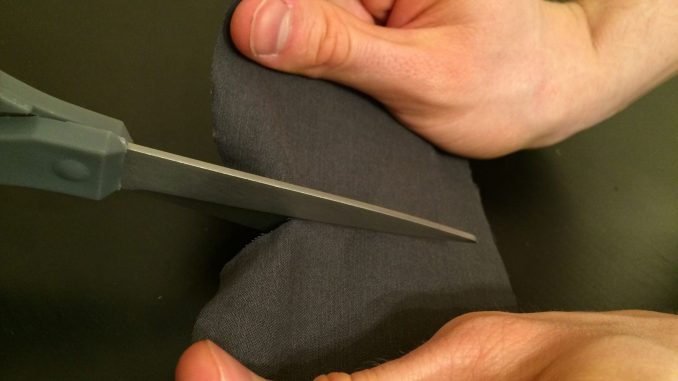
Oftentimes, mounting large cutting targets can be tricky. When dealing with something like an animal carcass, the first thing that comes to mind is usually to hang it. This makes a lot of sense as it is how people always see meat hung for processing, so it’s natural to test cut this way.
Well, there is a reason why you would want to hang something for processing. It’s because it makes it much, much easier to cut. But martial arts don’t deal with the best way to sever an opponent that is already bound and hanging*. The purpose of test cutting is to know how your cuts would perform in a realistic scenario, and there are two main forms of ‘cheating’ that hanging your target medium gets you. The target ripping itself open, and not offering any binding on your sword.
*There are a lot of crazy historical documents out there. If someone knows of one that has specific instructions on how to optimize your technique for this case, I would love to hear about it.
Ripping
When cutting into a hanging object, the force of gravity acts on the lower half and effectively rips the target open as you are cutting. Naturally, this makes it far less work. You are probably already familiar with this concept: imagine taking a piece of cloth and simply trying to cut through it with scissors or a knife. It’s kind of a pain. Now apply tension across where you are cutting — significantly easier.

The same principle is at play when you cut a hanging target. By hanging a target, especially if it has any sort of cloth on it, you can probably turn a superficial wound into a gaping cut. If only real opponents would be so considerate.
Binding
In addition to helping rip the target open, a hanging target will not bind up on the blade. What do I mean by this? Imagine for a minute a magical ninja sword grab. The fingers/palms are placed on either side of the blade, pinching it and preventing it from moving forward, regardless of how sharp the edge is.

While the blade grab is impossible to execute, the same effect is happening to a much smaller degree in every cut you perform — regardless of whether the target is hanging. The sides of the cut push on the blade, slowing it down. If your edge alignment is bad, the friction will be uneven and cause your blade to turn. It’s also why cutting into clay is much more difficult as you get deeper into your cut. There is more clay on top of your blade pushing down, ‘pinching’ your sword and causing drag.
With a hanging target, the material is pulled away from the blade and doesn’t cause any resistance. Especially when cutting wide targets like an animal carcass, this can mean the difference between a shallow wound and an impressive looking cut which cleaves a large chunk.
Conclusion
In conclusion, don’t hang your target medium if you are looking for any sort of martial arts value. It won’t tell you anything good about your form or give you any realistic insight into what a sharp sword would do in a combat scenario. All it is good for is making you feel better about how good you are — or helping you prepare dinner.

